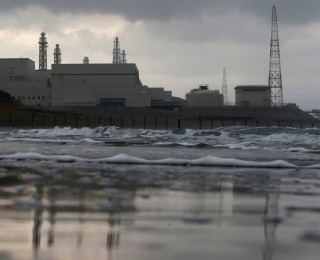Loading
Search
▼ Japan Lifts Operational Ban On World's Biggest Nuclear Plant In Niigata Prefecture
- Category:Other
Japan's nuclear power regulator on Wednesday lifted an operational ban imposed on Tokyo Electric Power Co's Kashiwazaki-Kariwa nuclear power plant two years ago, allowing it to work toward gaining local permission to restart.
TEPCO has been eager to bring the world's largest nuclear power plant back online to slash operating costs, but a resumption still needs consent from the local governments of Niigata Prefecture, Kashiwazaki city and Kariwa village, where it is located.
When that might happen is unknown.
With capacity of 8,212 megawatts (MW), the plant has been offline since 2012 after the Fukushima disaster a year earlier led to the shutdown of all nuclear power plants in Japan at the time.
In 2021, the Nuclear Regulation Authority (NRA) barred TEPCO from operating Kashiwazaki-Kariwa, its only operable nuclear power station, due to safety breaches including the failure to protect nuclear materials and missteps that saw an unauthorized staff member accessing sensitive areas of the plant.
Citing improvements in the safety management system, the NRA on Wednesday lifted a corrective action order that had prevented TEPCO from transporting new uranium fuel to the plant or loading fuel rods into its reactors - effectively blocking a resumption.
Following the decision, TEPCO said it would continue its efforts to regain the trust of the local community and society at large, while Japan's chief cabinet secretary said the government would do its part to aid the process.
"The government will seek the understanding and cooperation of Niigata Prefecture and local communities, emphasizing 'safety-first,'" Yoshimasa Hayashi, the government's top spokesperson, said.
Resources-poor Japan is eager to bring more of its nuclear power plants online to reduce its reliance on imported fossil fuels such as liquefied natural gas (LNG).
The Institute of Energy Economics, Japan (IEEJ) forecast last week that Japan's LNG imports would decline to 58.5 million metric tons in the 2024/25 fiscal year from an estimated 64 million tons this year. The fall factors in the anticipated restarts of a few more nuclear reactors and an increase in renewable energy sources.
Shares in Tepco had soared after the NRA indicated early this month that it would consider lifting the operational ban after conducting an on-site inspection and meeting with the company's president.
© Thomson Reuters 2023
TEPCO has been eager to bring the world's largest nuclear power plant back online to slash operating costs, but a resumption still needs consent from the local governments of Niigata Prefecture, Kashiwazaki city and Kariwa village, where it is located.
When that might happen is unknown.
With capacity of 8,212 megawatts (MW), the plant has been offline since 2012 after the Fukushima disaster a year earlier led to the shutdown of all nuclear power plants in Japan at the time.
In 2021, the Nuclear Regulation Authority (NRA) barred TEPCO from operating Kashiwazaki-Kariwa, its only operable nuclear power station, due to safety breaches including the failure to protect nuclear materials and missteps that saw an unauthorized staff member accessing sensitive areas of the plant.
Citing improvements in the safety management system, the NRA on Wednesday lifted a corrective action order that had prevented TEPCO from transporting new uranium fuel to the plant or loading fuel rods into its reactors - effectively blocking a resumption.
Following the decision, TEPCO said it would continue its efforts to regain the trust of the local community and society at large, while Japan's chief cabinet secretary said the government would do its part to aid the process.
"The government will seek the understanding and cooperation of Niigata Prefecture and local communities, emphasizing 'safety-first,'" Yoshimasa Hayashi, the government's top spokesperson, said.
Resources-poor Japan is eager to bring more of its nuclear power plants online to reduce its reliance on imported fossil fuels such as liquefied natural gas (LNG).
The Institute of Energy Economics, Japan (IEEJ) forecast last week that Japan's LNG imports would decline to 58.5 million metric tons in the 2024/25 fiscal year from an estimated 64 million tons this year. The fall factors in the anticipated restarts of a few more nuclear reactors and an increase in renewable energy sources.
Shares in Tepco had soared after the NRA indicated early this month that it would consider lifting the operational ban after conducting an on-site inspection and meeting with the company's president.
© Thomson Reuters 2023
- December 27, 2023
- Comment (0)
- Trackback(0)


